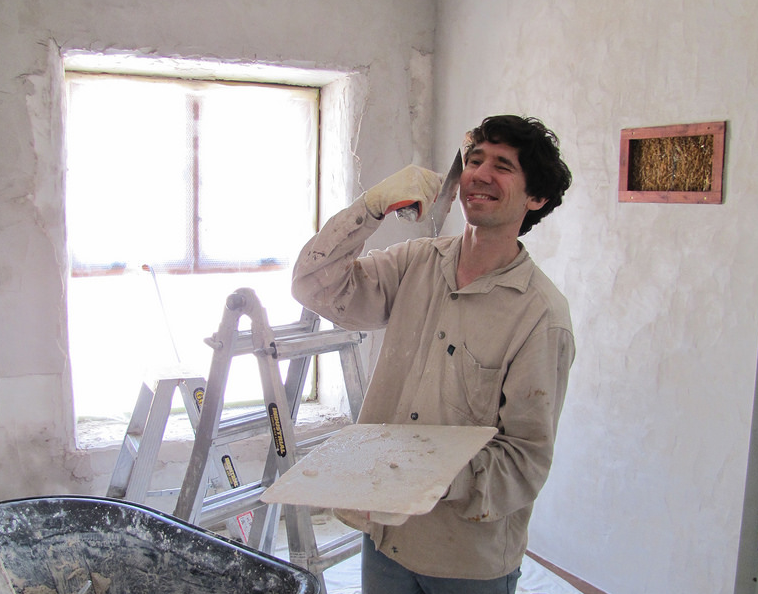Plastering Services: Specialist Solutions for Smooth and Sturdy Wall Surfaces
Plastering Services: Specialist Solutions for Smooth and Sturdy Wall Surfaces
Blog Article
Recognizing the Vital Strategies of Gluing for Home Enhancement Projects
In the realm of home renovation, mastering the essential strategies of plastering can substantially boost both the functionality and visual allure of a space. The plastering process encompasses critical stages, from precise surface preparation to the accurate application of materials.
Kinds Of Gluing Methods
Although various smudging methods exist, each serves an one-of-a-kind purpose and uses unique visual high qualities. One of the most typical approaches is traditional lime plastering, which is recognized for its breathability and versatility. This method is particularly useful for older frameworks, allowing moisture to leave while keeping structural integrity.
One more extensively used method is gypsum plastering, which involves the application of a quick-setting substance. It provides a smooth surface and is suitable for indoor walls and ceilings, making it a prominent option in modern building. For a much more textured appearance, trowel-on plastering techniques such as stucco and Venetian plaster are usually employed. Stucco, commonly used in outsides, offers toughness and climate resistance, while Venetian plaster is renowned for its elegant, sleek surface.
Additionally, there are more specialized strategies, such as skimming, which is a procedure that includes applying a thin layer of plaster over existing surfaces to develop a smooth surface. Each of these strategies can dramatically affect the overall visual and capability of an area, making it necessary to choose the proper technique based upon the certain requirements of a project.

Tools and Products Needed

The hawk serves as a system to hold the plaster, while the trowels, available in numerous sizes, are vital for application and smoothing. A float, typically made of rubber or sponge, is used to attain an uniform coating.

Spending in high-quality tools and products eventually adds to an extra effective smudging task, yielding a resilient and aesthetically pleasing coating. Properly equipped, you lay the groundwork for reliable gluing and home renovation.
Step-by-Step Plastering Refine
With the right devices and materials in hand, the following phase entails executing the gluing process with accuracy. Begin by preparing the surface area to make sure optimal bond. Get rid of any loosened debris, dust, or old plaster, and apply a bonding agent if required.
As soon as the surface area is prepped, blend the plaster according to the maker's guidelines, accomplishing a smooth, lump-free uniformity. Using a trowel, use the very first coat, recognized as the scrape coat, to a density of about 5-10 mm. Make sure uniform coverage, and utilize a comb or scratcher to produce grooves for much better bond of subsequent layers.
After permitting the scratch coat to set partially, apply link the 2nd layer, or the brown layer, smoothing it out for an even surface. Enable this layer to completely dry, normally for 24-48 hours, depending on the conditions. Ultimately, apply the ending up layer, which ought to be thinner and smoother. Plume the sides to mix right into the surrounding surface, achieving a seamless look.
When the plaster has dried completely, it can be sanded gently to eliminate blemishes. Adhere to up with a guide prior to paint for a polished final appearance.
Common Errors to Avoid
Failing to recognize typical blunders can considerably influence the top quality of your plastering job. Overlooking to fix any kind of underlying issues, such as moisture or architectural damage, can jeopardize the plaster's stability.

Timing is also essential; many inexperienced plasterers hurry the application. Permitting the preliminary layer to dry completely prior to applying succeeding layers is necessary to protect against excessive splitting and shrinking.
In addition, not making use of the right tools can impede the finishing process. Making use of trowels that are too big or little can influence your control and the smoothness of the coating.
Tips for Finishing Touches
Attaining a perfect surface in plastering requires interest to information and a couple of critical methods. As soon as the first application has actually dried, start the finishing process by utilizing a moist sponge or trowel to ravel any kind of flaws. This step not just boosts the surface yet also aids to get rid of any excess plaster that might have dried erratically.
Following, their website think about using a fine-grit sanding block or post sander for a more polished appearance. Sanding ought to be done gently to prevent damaging the underlying layer - Plastering. Constantly use a mask to protect versus dust inhalation
After sanding, evaluate the surface under various lights conditions to determine any type of missed out on disparities or areas. Apply a thin layer of ending up plaster if necessary, feathering out the edges to blend seamlessly with the surrounding area.
Final Thought
In verdict, grasping vital plastering techniques significantly enhances the high quality of home enhancement projects. Recognizing the numerous kinds of smudging methods, using ideal tools check out here and materials, and sticking to a systematic application procedure add to attaining a resilient and smooth surface.
In the realm of home enhancement, grasping the vital techniques of plastering can dramatically enhance both the functionality and aesthetic charm of a room.Although different smudging strategies exist, each serves a special function and uses distinct visual high qualities. Plastering. For a more textured look, trowel-on plastering methods such as stucco and Venetian plaster are frequently employed. Stucco, typically used in exteriors, provides durability and climate resistance, while Venetian plaster is renowned for its lavish, polished finish
Generally used plaster types consist of gypsum plaster, lime plaster, and cement-based plaster, each serving different functions and environments.
Report this page